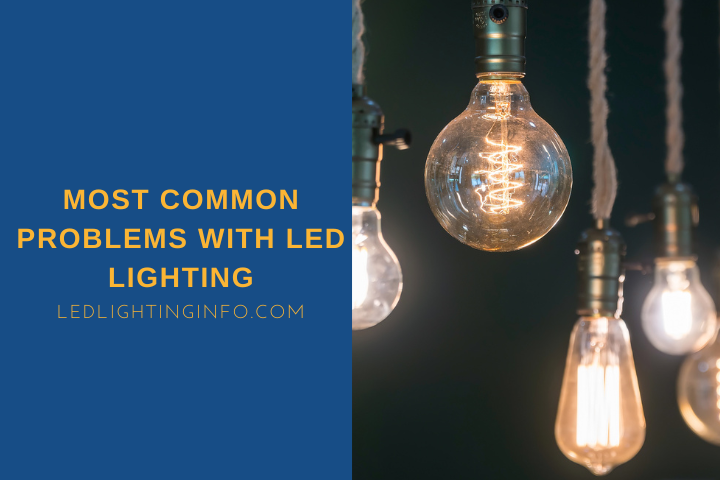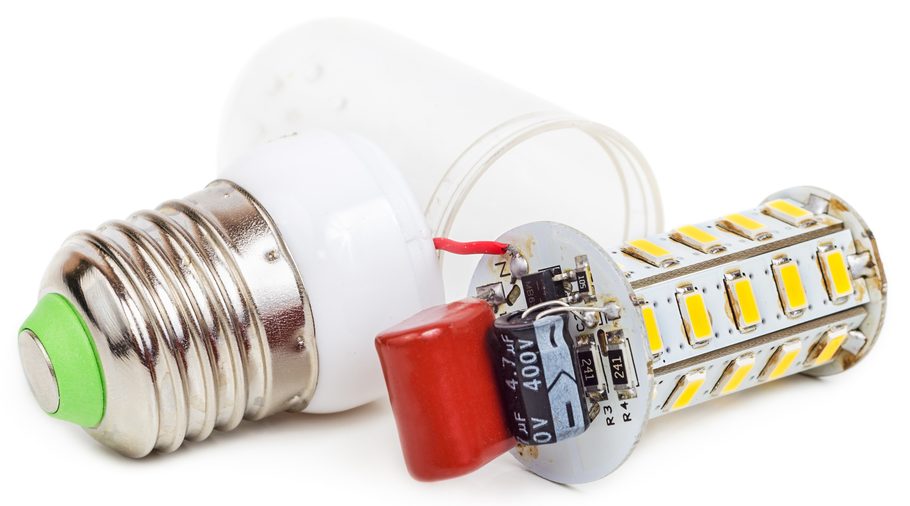You might very well know that an LED can last you over 50,000 hours, with bill savings of hundreds of dollars over the lifetime of the bulb. That’s all fine and dandy when your LED actually keeps on working as expected.
LED lights are pretty dependable, but that doesn’t mean they’re immune to issues. And there are some recurring problems that you might encounter.
The most common problems with LED lighting are:
- Heat management
- Flickering lights
- Issues with the LED driver
- Enclosed fixture problems
- Longevity and lifespan issues
- Dimmer switch compatibility
- Fading, dimming lights
- Poor quality of color
- Dull light from a new bulb
- Power surges and the damage they cause
- Issues with integrated fixtures
Let’s look through each of these potential problems with LED lights and how to solve them.
Table of Contents
LED Light Bulb Heat Issues
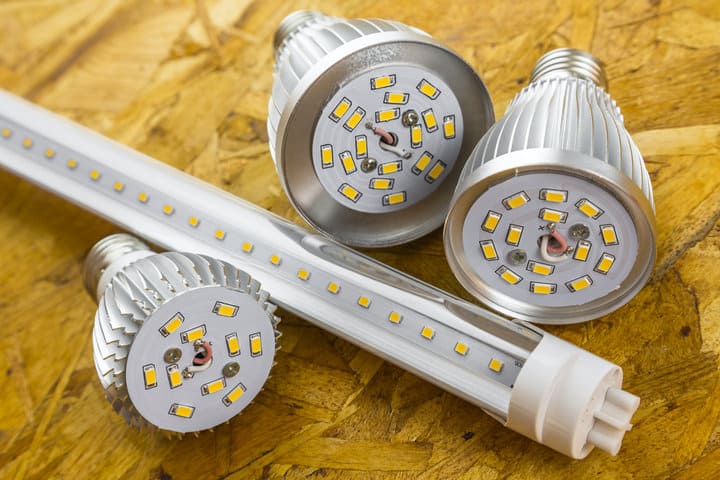
One of the most common problems with LED lighting is overheating. LEDs need to be kept cool – heat can cause all kinds of issues with how they work, making them flicker or causing them to prematurely fail.
Solutions:
- Make sure to always use LEDs in a well-ventilated space
- Buy good quality bulbs as they will have a better heat sink to draw heat energy away from the light-emitting diode
- Don’t install LED lights in the same fixture as other bulb types, as the extra power will generate more heat
- Don’t use regular LEDs in an enclosed fixture where heat will build up
Further reading:
LED Light Flickering
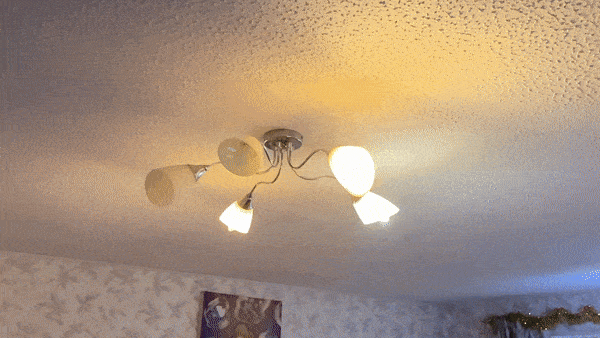
When LED lights flicker, it tends to mean there’s a problem with the power levels for the bulb. This can be caused by a faulty driver, problems with the wiring, or an issue with the electrical current.
Solutions:
- Make sure you’re using dimmable LED bulbs if it’s a dimmer circuit
- Try replacing the bulb with another – it may be a faulty one
- Avoid using LEDs in the same circuit as high-power lights, such as traditional incandescent bulbs, as they can consume all the current and leave LEDs to struggle
- Check the wiring connections at the light fixtures and the switches
Further reading:
LED Driver Problems
The LED driver is the component of LED light bulbs that converts the current from AC to DC and steps it down to a suitable level. When the circuitry in the driver starts to fail, it causes the bulb to overheat, and it can fail to limit the current from the power supply, causing the bulb to fail.
Solutions:
- While you can technically replace an LED driver, it’s very difficult, so you likely need to buy a new bulb
- Avoid buying low quality LED bulbs – they often skimp on the driver quality, meaning the LED will never last as long as it should
Further reading:
LED Bulbs In Enclosed Fixtures
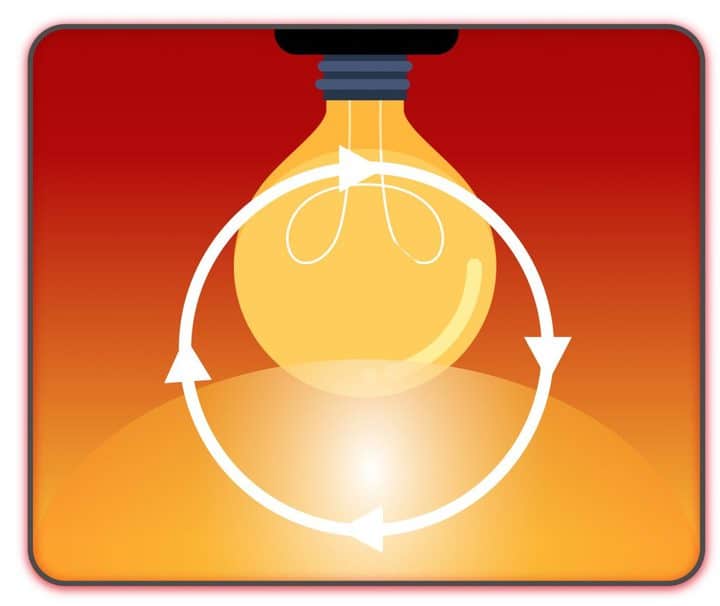
An LED light burning out in an enclosed fixture is a common problem because the heat generated accumulates. Even LED light fixtures designed to be enclosed get warmer than open fixtures and so don’t last as long.
Solutions:
- For enclosed fixtures, only ever use LED lights designed for that purpose
- Make sure the room with your enclosed fixtures has good airflow, and the light isn’t near a heat source
- If the problem persists, speak to the fixture’s manufacturer to report it faulty and ask for advice/a refund
Further reading:
LED Bulbs Don’t Last
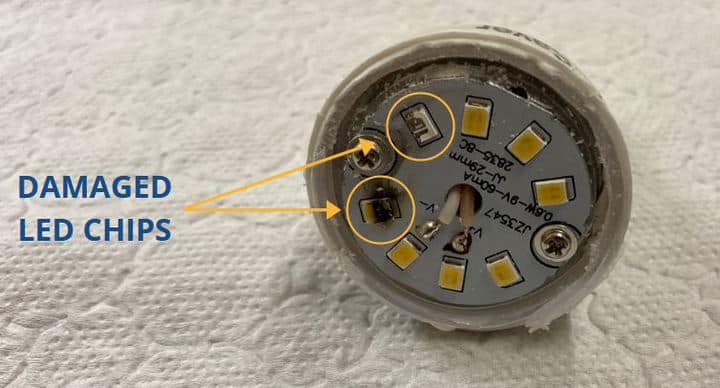
LED bulbs are often advertised as having a 50,000 hour lifespan, but if they aren’t managed properly or if you buy poor quality, they can burn out much faster. It could also be a sign of a deeper wiring problem.
Solutions:
- Try a different brand of LED bulb in the same fixture to see if it also burns out quickly
- If it does, check the wiring for the fixture and the light switch – power surges caused by loose wires could be destroying the light
- Buy your LED lighting from a reputable manufacturer
Further reading:
LED Lights Incompatible With Dimmers
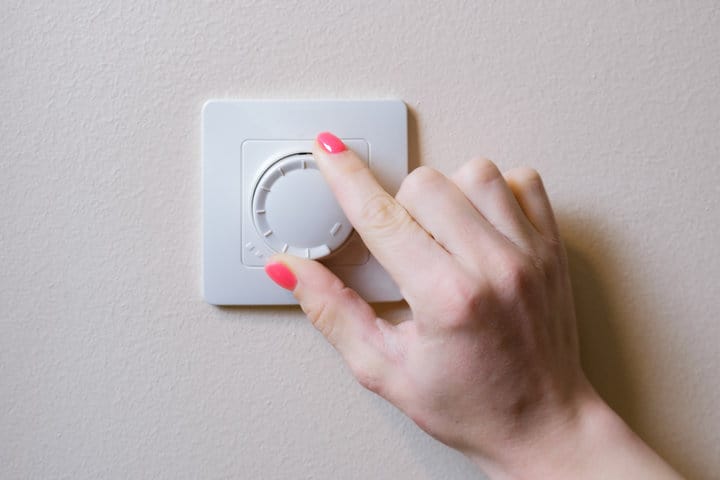
Using LED lights on a dimmer circuit that aren’t compatible can cause the lights a flickering problem or mean that the lights don’t turn on at all.
If you want a dimmable LED lighting system, you need to make sure you buy the right components.
Solutions:
- Check that your LED lights are dimmer-compatible
- Check that your dimmer switch works with LEDs – many older switches don’t
- Forego the dimmer switch and buy smart lights that can be dimmed from your phone or tablet
Further reading:
LED Light Suddenly Dim
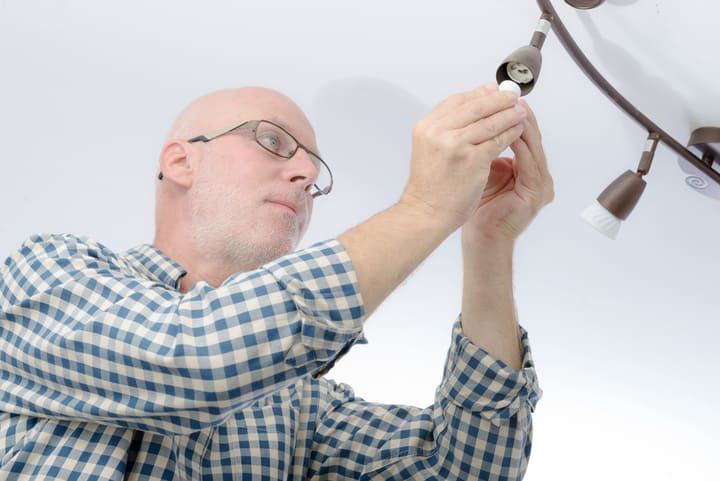
LED lights dim over time, which is normal as they degrade, but sudden dimming is a sign of either a faulty LED driver or, more likely, a problem with the power supply.
Solutions:
- Make sure your LED lighting systems aren’t sharing a circuit with high-demand appliances like microwaves, or even older power-hungry bulbs
- Check the fixture, light switch, and circuit breakers for loose wires
- If the light is on a dimmer switch, replace the dimmer
- Ask your neighbors if they’ve had power supply problems too as it could be a wider issue
Further reading:
LED Bulbs Make Everything Look Worse
LED chips emit a more blue light than older incandescent bulbs, and so have a lower Color Render Index (CRI) rating between 65 and 95. The lower the rating, the more the color of the bulb looks wrong. You can also buy LED lights of varying color temperatures.
Solutions:
- Check the color temperature (Kelvin) of the LED bulb you’ve bought first, to make sure you haven’t bought a cool white light if you wanted a warmer color
- Make sure you buy high-quality LED lamps with a CRI rating of 90 or above
Further reading:
- How Important Is CRI In Lighting?
- How To Check Color Temperature Of LED Light?
- What Is The Difference Between Kelvin And Lumens?
Poor Quality LED Light

Because LED lights use less watts to generate the same light as older bulbs, it’s often easy to get confused and buy low quality lights that have a low lumen output. If the LED lights are permanently dim it could mean some of the diodes have burned out or the light is overheating, often caused by poor quality of the LED bulb.
Solutions:
- Buy lights with a high lumen per watt rating. For maximum brightness, 90 lumens per watt is good.
- If you can’t find the lm/w information, just buy one with a high lumen rating for maximum light output
- If dimness is due to the LED overheating, try to improve the airflow and check for loose wiring
Further reading:
Power Surge Damage LED Lights
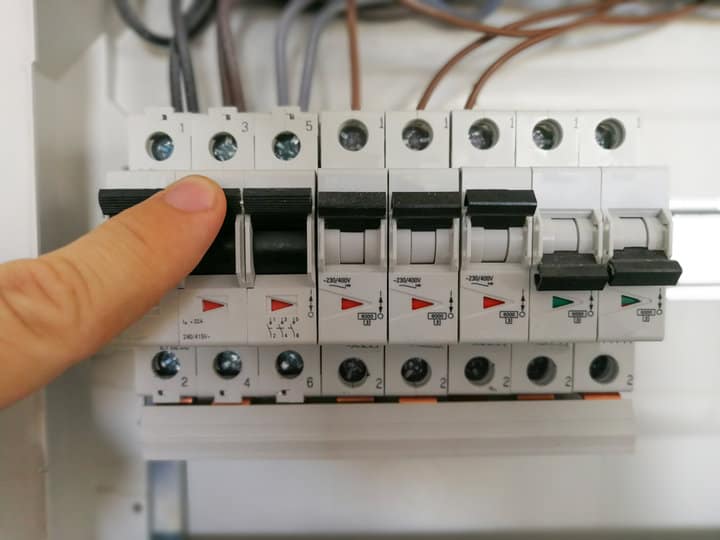
Power surges can damage LED lights permanently, overloading the capacitors and making them fail. LED lights are designed to work on a lower power, and the LED chips are fried if the current is too strong.
Solutions:
- If it’s a one-off power surge that you’ve verified won’t happen again, replace any broken LED light with a new one
- If power surges are recurring, check your wiring and your circuit breaker – there may be a fault. Call a professional if you aren’t sure as power surges can be dangerous
Further reading:
Integrated LED Light Fixture Not Working
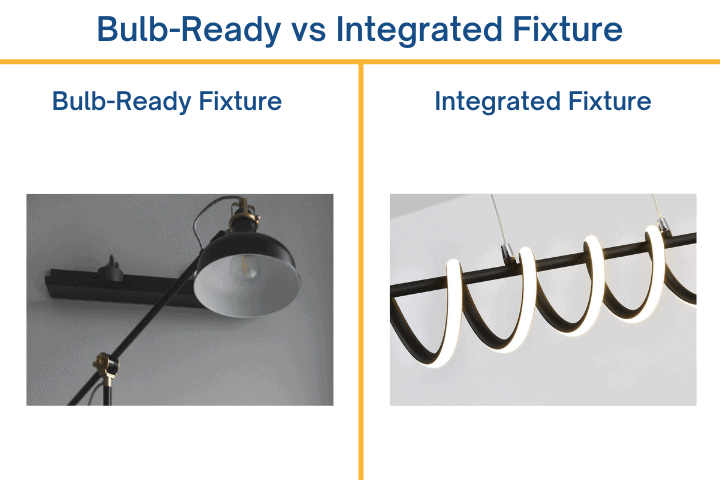
Integrated LED lights are sold as complete solutions with no need to change bulb – so if they aren’t working, it’s likely a wiring issue, or you’ve bought a faulty light.
Solutions:
- Check for loose wires, and that you’ve attached the wires to the correct wires on the integrated light
- If the wiring is sound, the LED light has likely failed. You can’t replace the bulb so you need to replace the whole light
Further reading:
Can An Integrated LED Light Bulb Be Replaced?
How To Troubleshoot LED Lights
When an LED light isn’t working, you need to determine whether it’s the bulb, the fixture, the light switch or a wider problem in your home. To do this:
- Remove the bulb and try a different bulb in the same fixture. If it works correctly, you know the problem was the bulb.
- If the new bulb doesn’t work correctly, try those bulbs in a fixture in the same room, controlled by the same switch. If they work, it’s likely a problem with that individual fixture.
- If they don’t, try the bulbs in a different room. If they work, you can assume the problem is with either the switch or the wiring in that room.
- If none of your lights are working correctly, assume it’s a problem with the circuit breakers or your home’s electrical supply, and consider hiring a professional.
Once you’ve narrowed down the device with the problem, you can check wiring or look for signs of wear that suggest it may need replacing.
Final Words
LED lights are generally very reliable and work really well, but you may encounter any of these issues with your lighting technology at home.
The LED industry is unfortunately flush with low quality LEDs, so buying from a reputable brand will ensure your lights work properly, without excessive heat, and with the life span you expect.
If you need any further advice on using LEDs in your home, why not browse all my LED guides to learn more about how they can be used.
Looking for an LED bulb but not sure what type you need?
Check out my free bulb picker and select the right bulb within few clicks.

